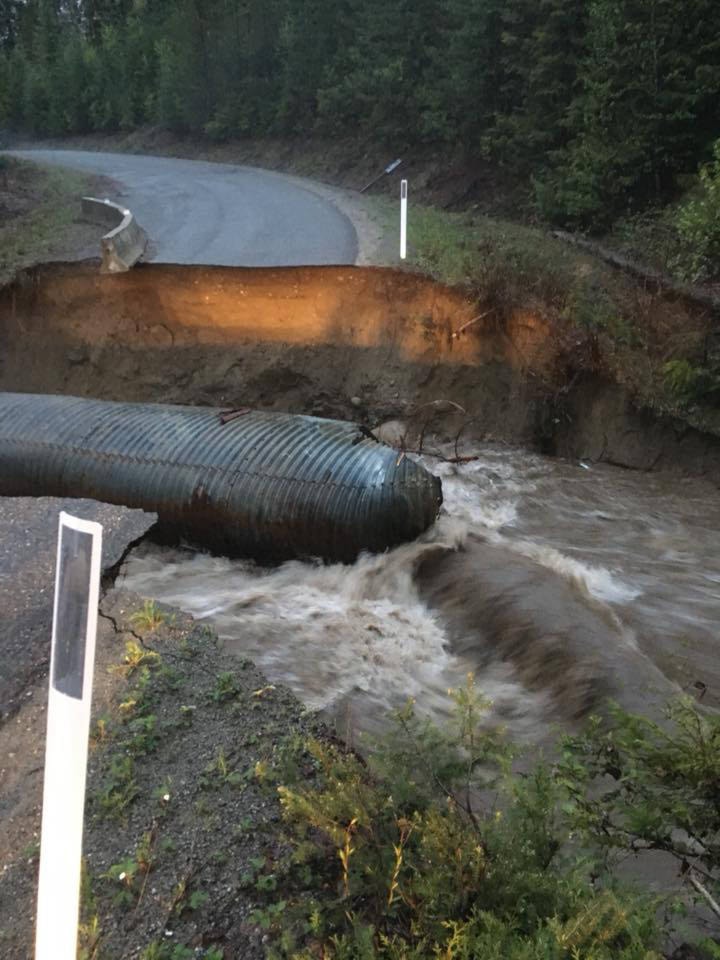Christina Lake is rising fast.
Early Thursday, as part of a Boundary-wide advisory, all properties on the Christina Lake floodplain were issued an evacuation alert by the Regional District of Kootenay Boundary (RDKB).
By the afternoon, the alert was upped to an evacuation order for 114 Christina Lake floodplain properties, meaning all residents were ordered to leave the area immediately and report to a reception centre.
Regional Director Grace McGregor, from Area C/Christina Lake, said on Wednesday, that the lake is higher than normal for this time of year but it hasn’t reached historic levels - yet.
“It’s likely to get there because it is early for that much water to be feeding into it,” she began. “If you think of all the tributaries and how much snow there is up on top, all of that is feeding into the lake or going in at a pretty good clip, so the lake is coming up quickly.”
McGregor says the Kettle River needs to peak to allow Christina Creek to drain the lake water.
“(Otherwise) the water goes back into the lake instead of out,” McGregor told the Times. “That adds insult to injury, if you will, because then people end up with rapid rising water,” she added.
“Having said that, if you are in one of the floodplains, you can pretty much expect that you are going to have some water.”
After a washout at McRae Creek Road on Wednesday afternoon, Christina Lake Fire Rescue warned people to steer clear of that area. The department said Emcon crews were at the site, which is located 200 metres from the Highway 3 turnoff. No update was available by press time.
With Boundary rivers expected to reach the highest levels since 1948, by Thursday afternoon, the RDKB widened the evacuations order encompassing 1,158 properties from regional Areas C, D, and E, and Christina Lake through the West Boundary, including Grand Forks. Approximately 2,500 residents were affected.
As water levels peak, high water could cut off road access to many properties in the floodplain, even if individual homes may not be directly threatened by flooding, the RDKB advised.
“Without overland access, emergency responders will be unable to reach residents and residents will be unable to reach emergency services. Lack of access and egress is a threat to life and safety.”
Waters continue to rise in the Kettle River, West Kettle River, the Granby River and Boundary Creek, the RDKB warned.
“Forecasts for precipitation and warm temperatures at high elevations will hasten snowmelt in the coming days.”
McGregor urges residents to remain vigilant.
“They need to understand that climate change is all about extremes,” she explained. “Extreme flooding, extreme dry, extreme fires, and we have proof of that if you look at the past few years. So I just really want every to pay attention and they need to read when we send out things from the regional district.”
In addition to regional district alerts, McGregor mentioned respective “e-blasts” issued by the Christina Lake Welcome Centre that reiterate “need-to-know” information about the lake area.
“Don’t get me wrong, I am extremely concerned but we are not to the point yet where we haven’t been before,” McGregor said. “I think everyone on the lake pretty much knows exactly what their property can do.”
An evacuation order means residents must leave the area immediately and report to the closest reception centre. If residents refuse to evacuate, they elect to forego any response by emergency services, including police, fire, ambulance or search and rescue.
For those on an evacuation alert, that means residents need to pack and be ready to leave immediately if flood conditions worsen and an evacuation order is required for public safety.
During an evacuation alert, residents need to gather essential items, move important belongings to higher locations in their homes, arrange to move pets or livestock, arrange for alternate accommodation for themselves and designate a meeting place for family or others away from the evacuation area.
